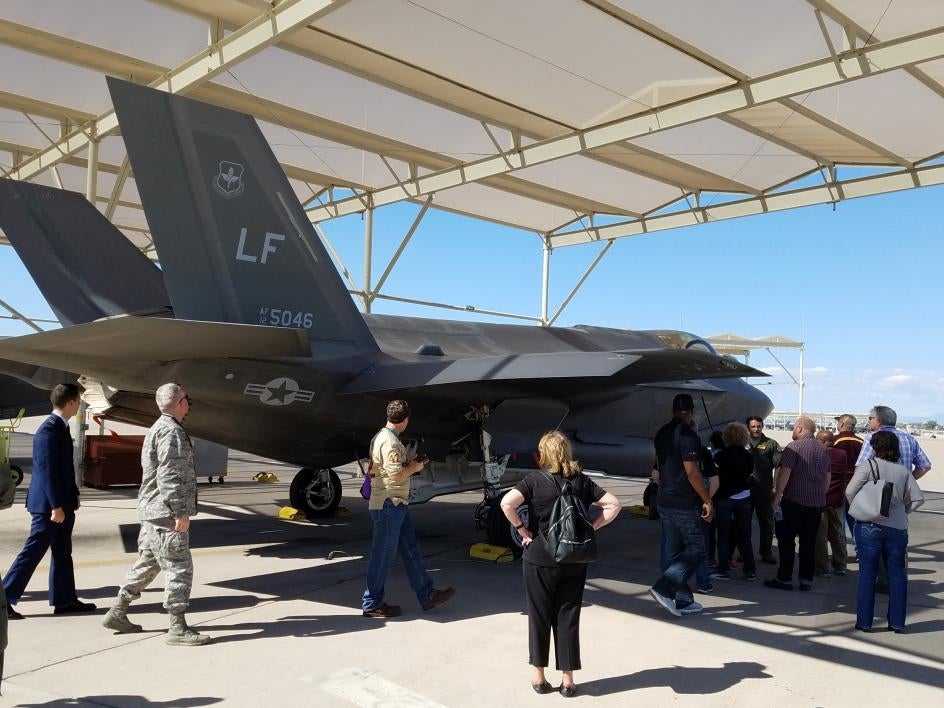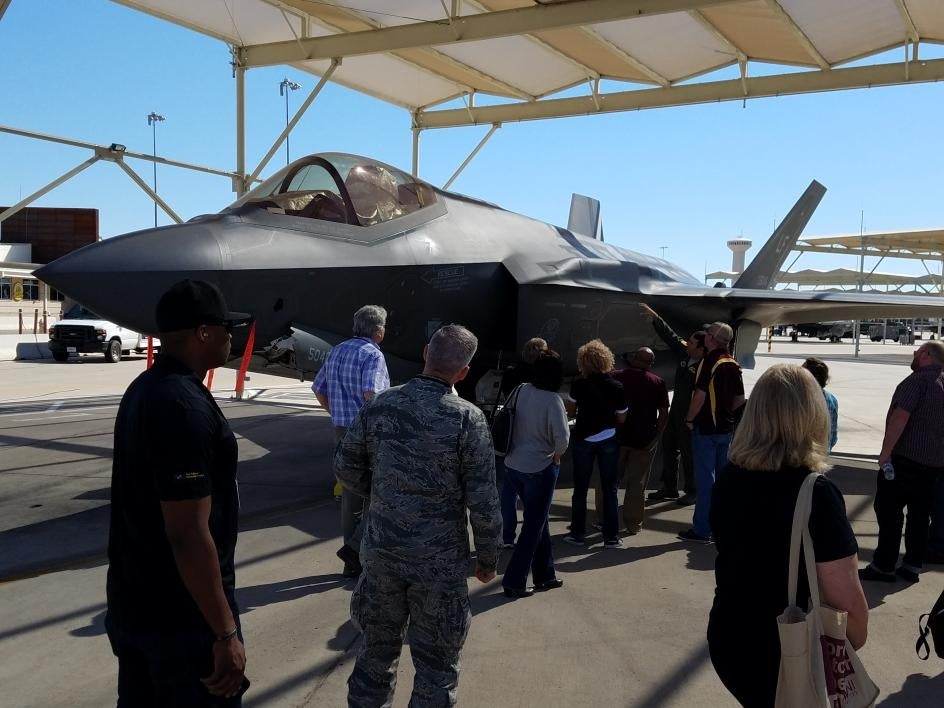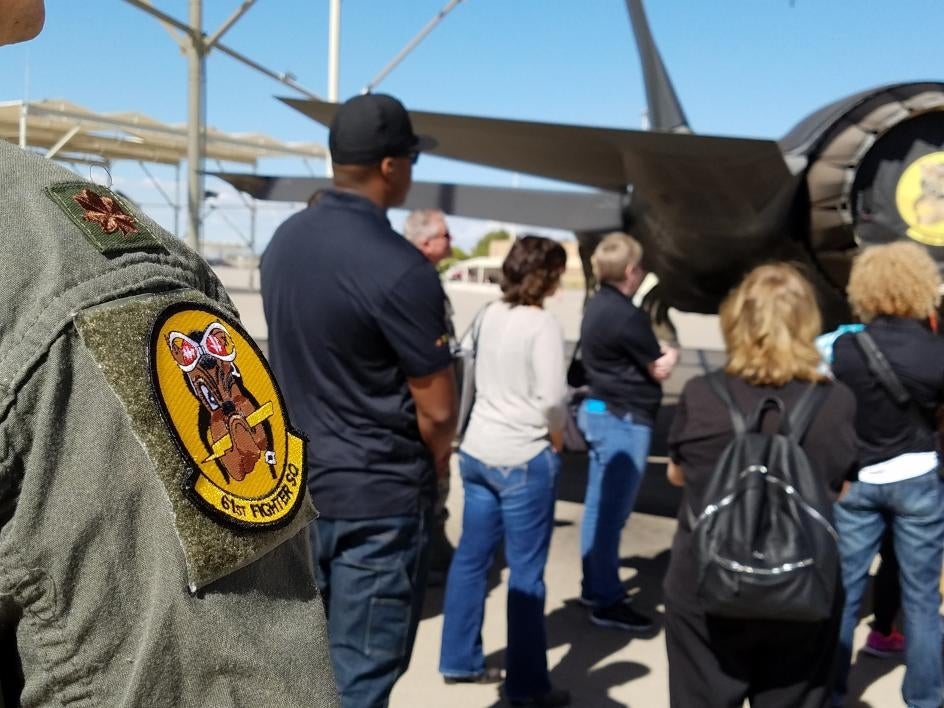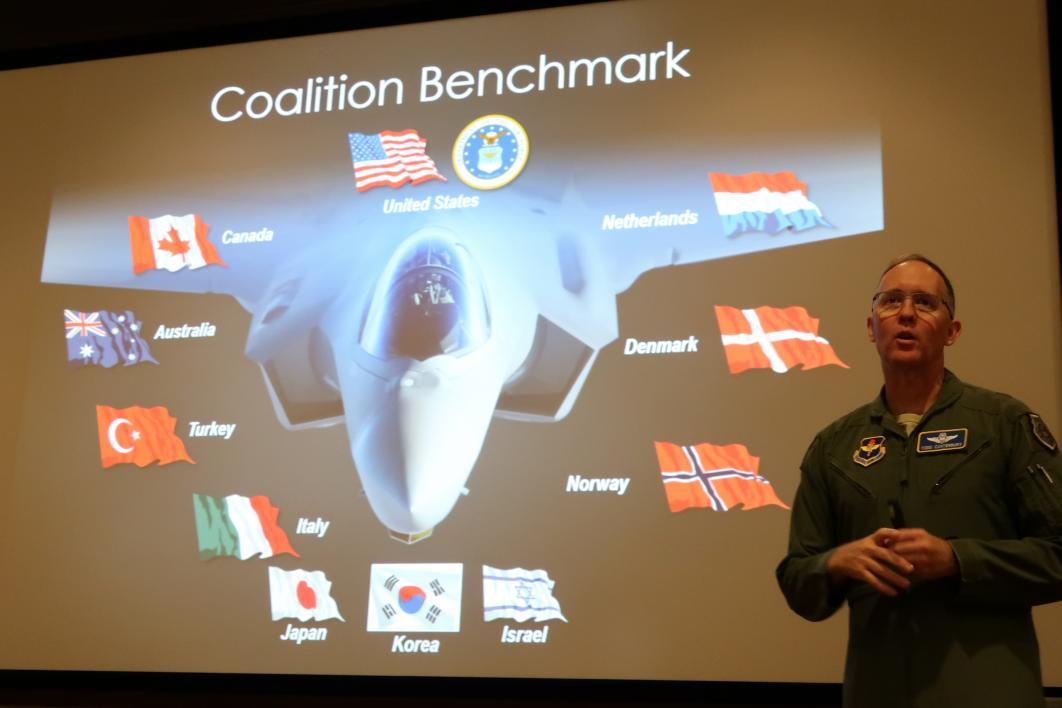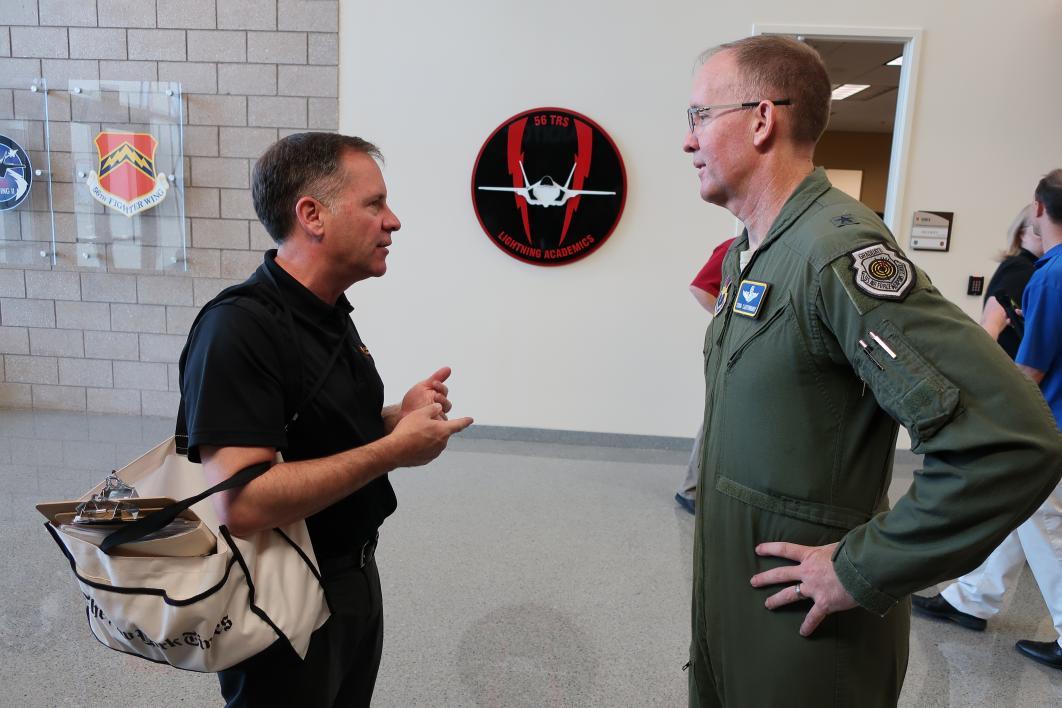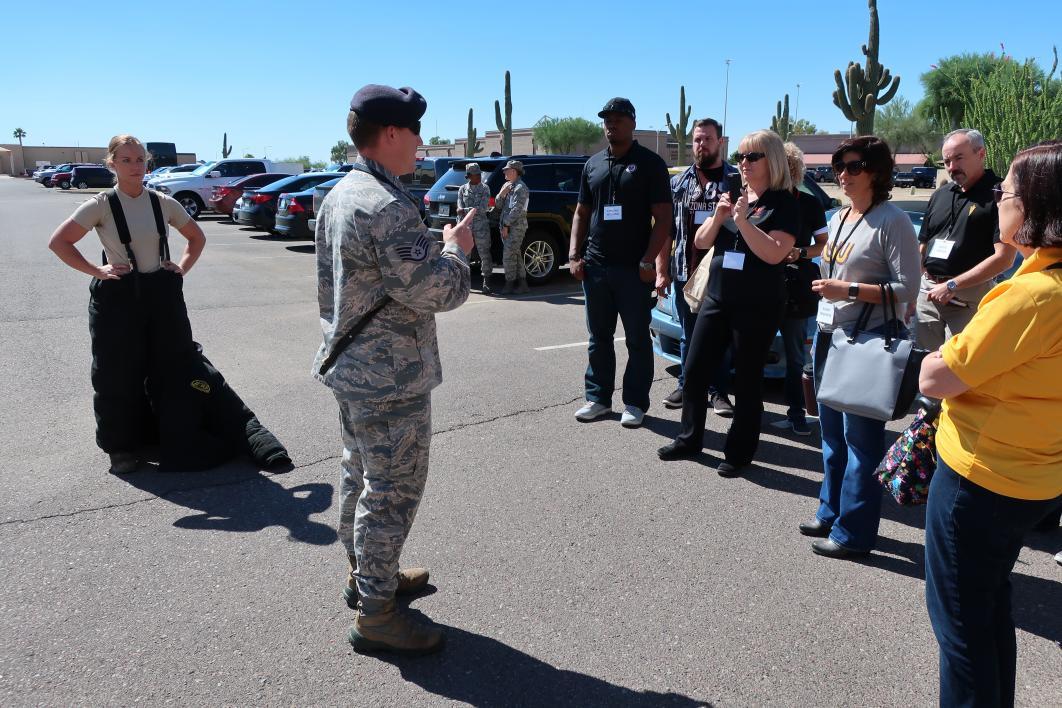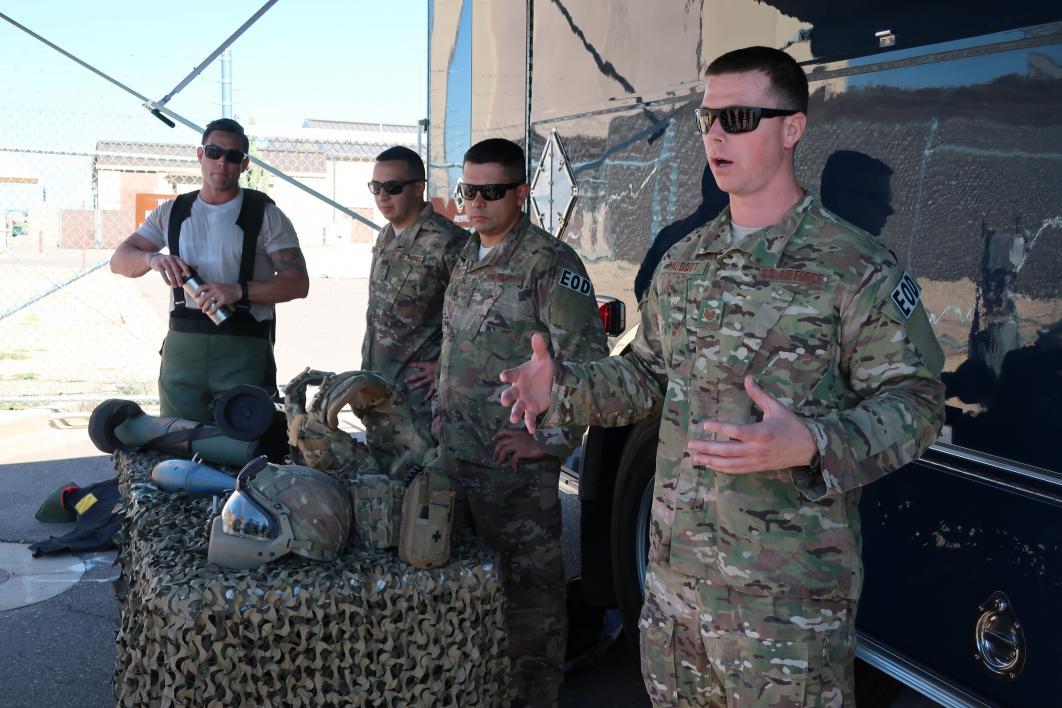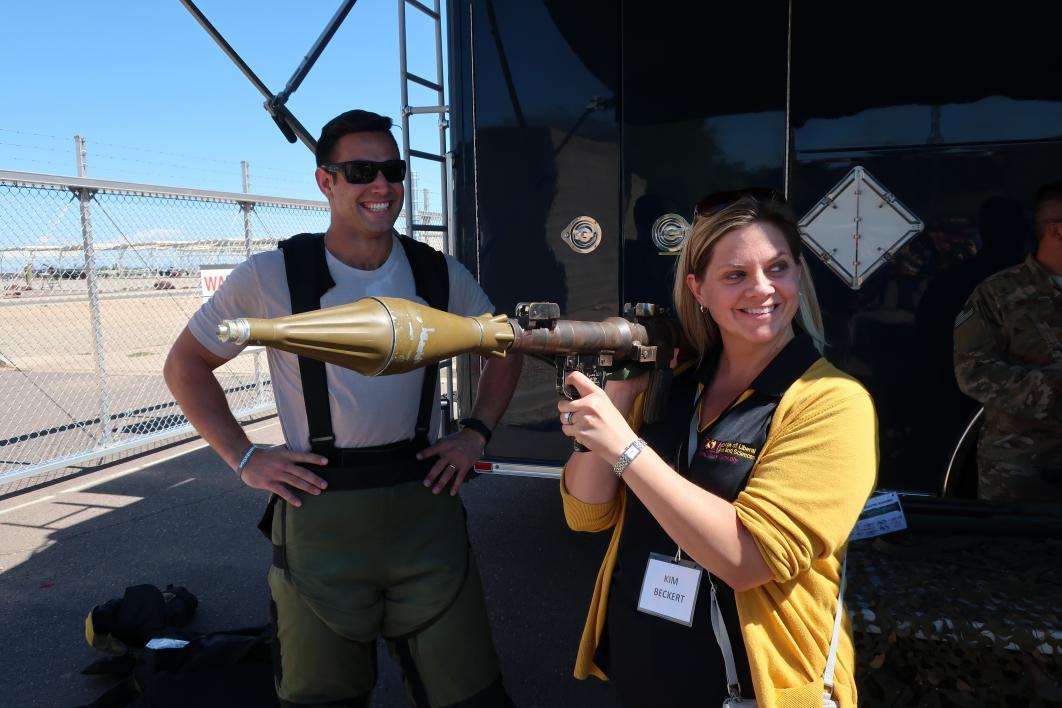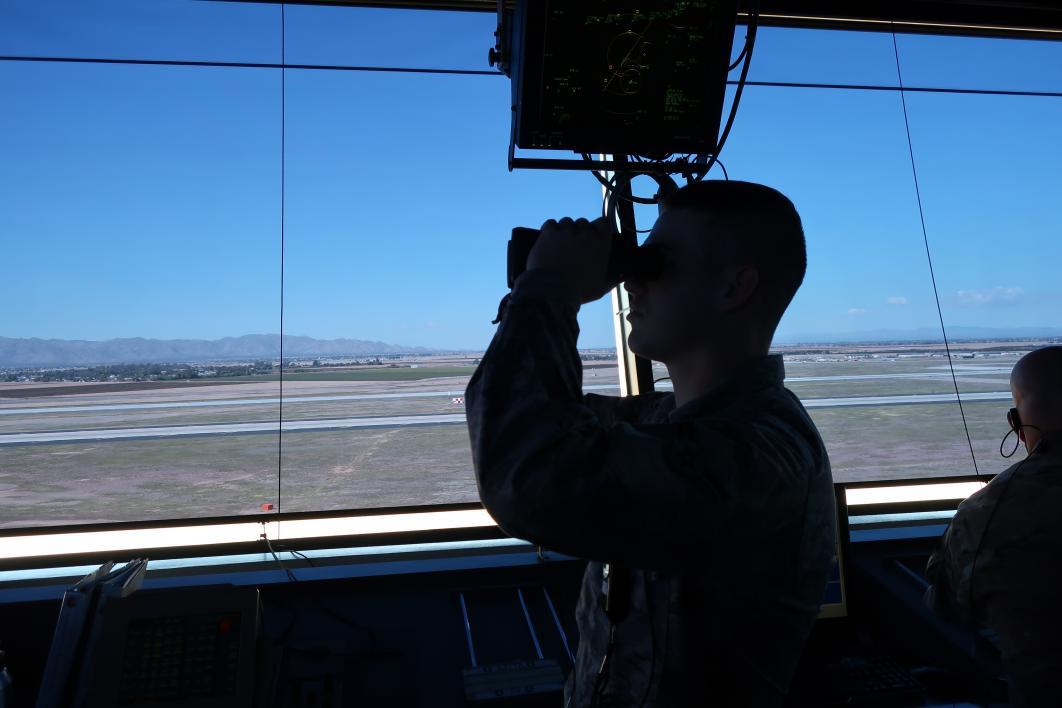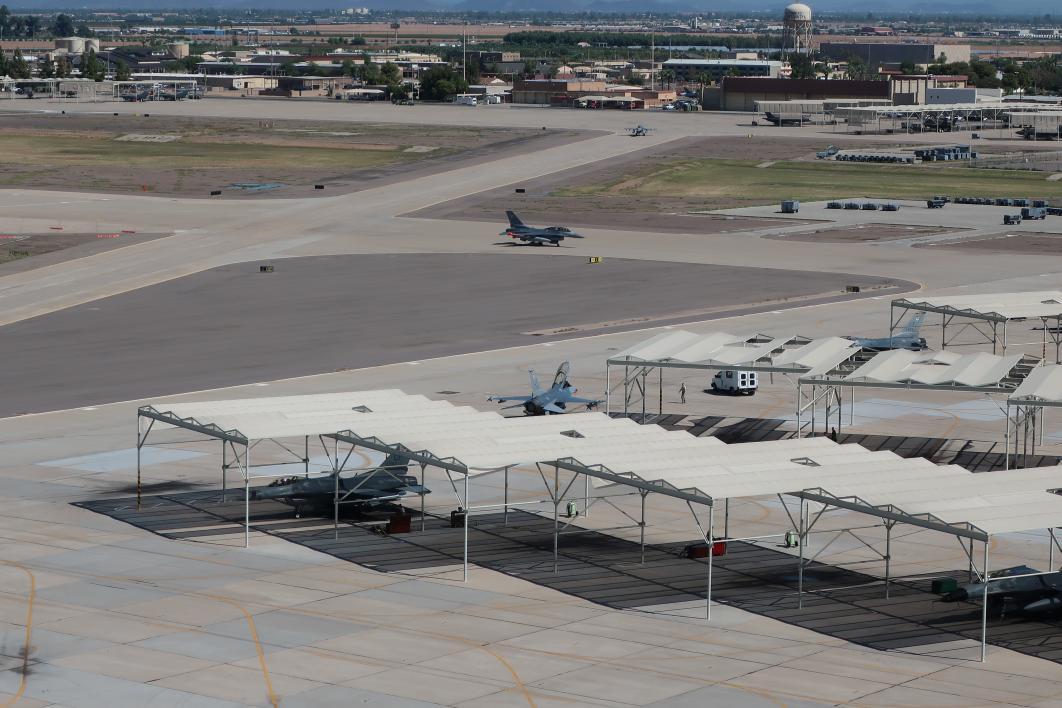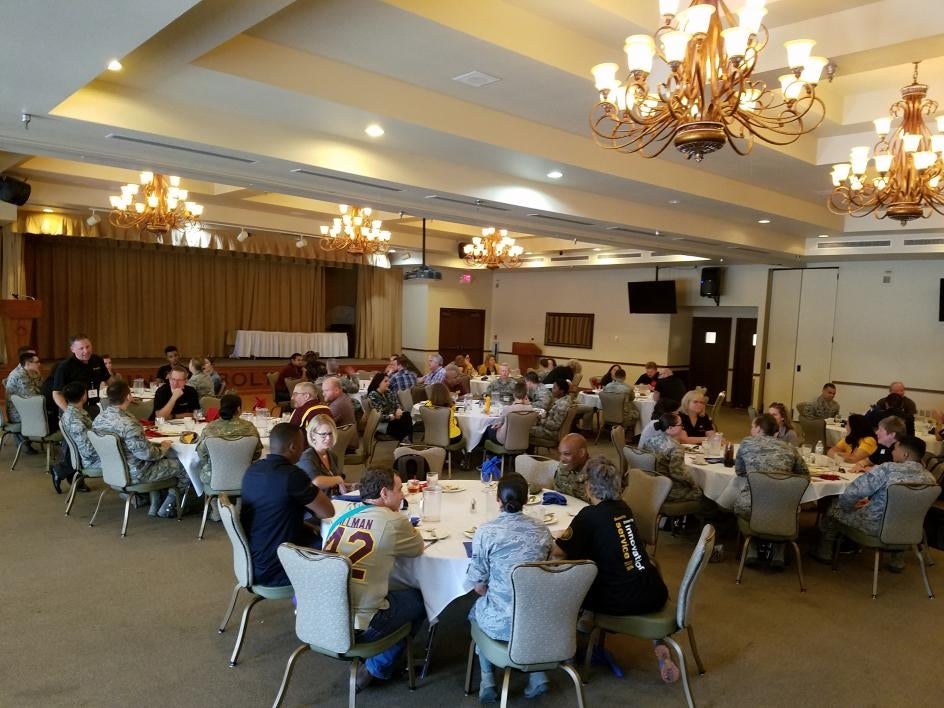CLAS trip gives academics an inside look at premier fighter base, military life

When Paul LePore traveled to Virginia in April to participate in the Department of Defense’s oldest and most prestigious public outreach program, he walked away truly inspired by what he saw.
LePore, an associate dean with Arizona State University's College of Liberal Arts and Sciences, was so moved after spending four days with military members during the Joint Civilian Orientation Course that he organized an Oct. 9 trip to Luke Air Force Base in Glendale so a group of ASU faculty, staff, administrators and students from across campus could have a similar experience.
“ASU is wonderful at serving our veteran and active-duty members through our courses and our programs,” said LePore. “We aim to do it better than anyone. However, what I think is missing, and something I had the opportunity to witness during the JCOC last spring, is to actually see what the military does on a day-to-day basis. I didn’t appreciate the depth of learning that is involved.”
LePore said it is important for the university to not only acknowledge veterans but to actually get to know them to understand their experience.
“We’re not only serving them, but they are actually bringing a richness to our classroom and to our departments,” he said. “I’m hopeful that the 45 folks that we brought with us are able to see a different part of their students' experiences through looking at what the airmen here at Luke are doing. Maybe gain a different level of appreciation or understanding of what the military really means in the lives of the thousands of students we are serving.”
During the tour, the ASU group received a mission briefing from the ASU alum base commander, toured the air traffic control tower, observed a military working dog demonstration, learned about Luke’s explosive ordnance disposal team and got a close-up look at the Air Force’s newest jet fighter, the F-35A Lightning II.
Luke is home to the 56th Fighter Wing, the largest fighter wing in the Air Force. The base is the primary location for training F-35 and F-16 Fighting Falcon pilots. The wing also oversees F-15C Eagle training in association with the Oregon Air National Guard, which means Luke trains pilots in every Air Force jet fighter platform except the F-22 Raptor. To date, more than 68,000 aviators have trained at Luke.
“Luke Air Force Base has been training fighter pilots since 1941,” said Brig. Gen. Todd Canterbury, 56th FW commander and a member of the ASU Class of 1992. “We train 95 percent of fighter pilots in the U.S. Air Force.”
With a workforce of nearly 7,000 active-duty military members, reservists and civilians, Luke has more than $10 billion in resources and contributes more than $2.4 billion annually to the Phoenix metropolitan area and the West Valley, Canterbury said.
The most significant change at Luke in recent years has been the fielding of the newest jet fighter in the Department of Defense arsenal, the F-35. Also known as the “Joint Strike Fighter” because it is designed to be flown by the different U.S. service branches and partner nations, the F-35 is a single-seat, single-engine, all-weather stealth aircraft designed for air-to-air combat and ground attack.
“The F-35 program is the biggest, most complex acquisition program DoD has ever undertaken,” Canterbury said.
By the end of the decade Luke is expected to host more than 100 F-35s and seven partner countries. Training international partners is not new to Luke: NATO nations and others have trained with the 56th FW throughout the years, and the base is a longtime host of two international fighter squadrons, including one from Singapore.
“Some folks wonder why we have such an international presence,” Canterbury said. “We have learned that we are not going to go to war alone. We are going to have to fight as a coalition. So why not start in training … so that when war kicks off we’re operating from the same playbook, we’re running from the same plays, and we know how each other is going to operate.”
Currently the wing is hosting F-35 pilots and maintenance crews from Australia, Turkey, Italy, Korea, Norway and Denmark. Japan and Israel completed their training recently, Canterbury said. Early next year the Netherlands will arrive and possibly Canada.
“Not only are we affecting the local community, we are affecting the world,” Canterbury said. “We work very closely with the local community and the Legislature to raise understanding on the importance of what we do here and why this is so critical to us.”
Regardless of the machinery and training programs, none of it is possible without outstanding community support and the work of the airmen who make it happen, Canterbury said.
“You will be amazed at the responsibility that we give to them,” Canterbury said. “I have airmen right out of high school that launch me out on my jet. I do a courtesy walk-around, but I trust that airman has got that jet cocked and ready to go. I don’t even think twice about it.”
The incredible amount of responsibility given to military members grabbed LePore’s interest during his time with JCOC, and it was reinforced during the Luke visit.
“We should put more responsibility on the young people we have at ASU, knowing that 18- to 22-year-olds here are fixing F-35 aircraft, are making sure that bombs are disposed properly, are working to make sure the flightline and air traffic control is safe not only for the military but for the civilians,” LePore said. “I don’t think we vest into our young people that sense of trust that we might, because it’s certainly working here.”
LePore hopes to continue the collaboration with Luke and would like to start the tradition of taking people to the base during this time of the year, a month or so prior to ASU’s yearly Salute to Service celebration. Opportunities exist for a curricular connection and taking the transition from military to civilian life to the next level. If nothing else, it is an opportunity to learn and appreciate the young men and women in uniform.
“If the percent of folks who are participating actively as a military officer or enlisted person is going down, then we need to do a better job of communicating that,” LePore said. “My dad was in the Navy, but I certainly was too young at the time to appreciate his service. I came around later to appreciate it, but the understanding was not there.
“More people need to see this.”



